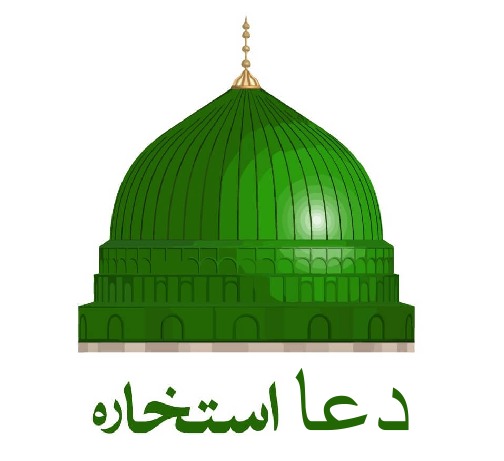
The Spiritual and Cultural Importance of the Symbol of Islamic Faith
In Islam, symbols carry profound spiritual meaning, serving as reminders of faith, unity, and devotion. The primary symbol of Islamic faith is the shahada, the declaration that encapsulates the core belief of every Muslim (or Moslem, an alternate spelling). The shahada—“La ilaha illallah, Muhammadur Rasulullah” (There is no god but Allah, and Muhammad is His Messenger)—is the first pillar of Islam and the foundation of Islamic identity.
The Quran emphasizes tawhid (oneness of Allah), the essence of the shahada: “Your God is One God; there is no deity except Him” (Surah Al-Baqarah, 2:163). This blog explores the symbol of Islamic faith, its significance, and related symbols like the crescent moon, offering insights into their roles in Muslim life across cultures. We’ll address myths, share real-life examples, and provide beginner-friendly explanations to deepen your understanding of Islamic identity.
What is the Main Symbol of Islamic Faith?
The shahada is universally recognized as the main symbol of Islamic faith. It’s a concise declaration of monotheism and the prophethood of Muhammad (peace be upon him), recited by every Muslim during prayers, conversions, and moments of reflection. Its significance lies in its simplicity and profundity, uniting over 1.9 billion Muslims worldwide.
The shahada is rooted in the Quran and Sunnah. The Prophet Muhammad (peace be upon him) said, “Whoever says, ‘La ilaha illallah, Muhammadur Rasulullah,’ with sincerity, will enter Paradise” (Sahih al-Bukhari, 5827). Beyond its spiritual role, the shahada shapes Islamic identity by appearing in calligraphy, mosques, and daily life, symbolizing unwavering faith.
Other Symbols in Islamic Tradition
While the shahada is the primary symbol of Islamic faith, other symbols like the crescent moon hold cultural significance:
Crescent Moon and Star: Often associated with Islam, the crescent moon appears on flags of Muslim-majority countries like Turkey and Pakistan. It originated in the Ottoman Empire, not as a religious symbol but as a cultural emblem.
Calligraphy: Arabic calligraphy, especially of Quranic verses or the shahada, is a revered art form, symbolizing devotion.
Kaaba: The Kaaba in Mecca represents the spiritual center of Islam, symbolizing unity during Hajj.
These symbols complement the shahada but don’t carry its theological weight. For more on Islamic practices, see our post on The Five Pillars of Islam.
The Shahada’s Role in Muslim Life
The shahada is more than a statement—it’s a way of life for every Muslim. It’s recited in:
Daily Prayers: Included in the tashahhud during salah.
Conversion to Islam: Declaring the shahada marks entry into the faith.
Moments of Hardship: Reciting it brings comfort and reaffirms faith.
The Quran underscores its importance: “Those who believe and do righteous deeds—these are the best of creatures” (Surah Al-Bayyinah, 98:7). Scholars like Imam An-Nawawi emphasize that the shahada is the foundation of Islamic identity, guiding Muslims in all actions.
Case Study: Embracing Islam Through the Shahada
Amina, a 25-year-old from the UK, explored Islam after attending interfaith events. Drawn to the shahada’s simplicity, she studied its meaning and recited it to convert, embracing her Islamic identity. Initially nervous, she found peace in daily prayers and community support. Amina’s story, shared at a local mosque, inspired others, showing how the symbol of Islamic faith transforms lives. Her journey highlights the shahada’s universal appeal across cultures.
Cultural Significance of the Crescent Moon
The crescent moon, while not a religious symbol of Islamic faith, holds cultural importance. It’s linked to the Islamic lunar calendar, which determines Ramadan, Eid, and Hajj. Historically, the crescent moon became associated with Islam through the Ottoman Empire, appearing on minarets and flags. Today, it’s a recognizable emblem in Muslim communities, though scholars like Sheikh Ibn Uthaymeen clarify it lacks the shahada’s spiritual weight.
Real-Life Example 1: During Ramadan, Hiba, a Muslim in Malaysia, looks for the crescent moon to mark the month’s start. This tradition strengthens her connection to her faith and community.
Real-Life Example 2: Omar, a Moslem in the US, noticed the crescent moon on a mosque’s dome, sparking curiosity about its history. He learned it’s a cultural, not religious, symbol, deepening his appreciation for Islamic identity.
Common Myths About the Symbol of Islamic Faith Busted
Misconceptions about the symbol of Islamic faith can confuse beginners. Let’s address some:
Myth: The Crescent Moon is the Main Symbol of Islam
The crescent moon is cultural, not religious. The shahada is the true symbol of Islamic faith (Sahih al-Bukhari, 5827).Myth: Shahada is Only for Converts
Every Muslim recites the shahada daily in prayers, reinforcing faith (Sahih Muslim, 233).Myth: Muslim and Moslem Mean Different Things
Muslim and Moslem are interchangeable spellings, both referring to followers of Islam.
For more clarity, read our post on Understanding Islamic Terminology.
Beginner Tips for Understanding Islamic Symbols
If you’re new to the symbol of Islamic faith, these tips will help:
Learn the Shahada: Memorize its Arabic and English meanings to grasp its depth.
Study Its Context: Understand its role in the Five Pillars (Sahih al-Bukhari, 8).
Appreciate Cultural Symbols: Recognize the crescent moon’s historical role without equating it to the shahada.
Engage with Community: Attend mosque events to see symbols in action.
Explore more in our guide on Starting Your Islamic Journey.
The Shahada and Islamic Identity Across Cultures
The shahada unites Muslims globally, transcending cultural boundaries. In different traditions:
Arab World: Calligraphy of the shahada adorns mosques, emphasizing its centrality.
South Asia: The shahada is recited in Urdu-accented Arabic, reflecting local Islamic identity.
Western Countries: Converts embrace the shahada, integrating it into diverse cultures.
The Quran states: “Indeed, the religion in the sight of Allah is Islam” (Surah Aal-E-Imran, 3:19), highlighting the shahada’s universal role.
FAQs About Symbol of Islamic Faith
What is the main symbol of Islamic faith?
The shahada, declaring belief in Allah and His Messenger, is the primary symbol of Islamic faith (Sahih al-Bukhari, 5827).
Is the crescent moon a religious symbol?
No, the crescent moon is not a religious symbol in Islam. It’s a cultural emblem associated with the lunar calendar.
What’s the difference between Muslim and Moslem?
They are alternate spellings for the same term meaning a believer in Islam. Muslim is the preferred and standard spelling today.
Why is the shahada significant for Muslims?
The shahada is the first pillar of Islam, affirming belief in Allah and His Messenger. It’s recited in prayers and during conversions (Sahih Muslim, 233).
How is the shahada used in daily Muslim life?
Muslims recite the shahada in salah (prayer), during moments of hardship, and to reaffirm their faith throughout life.
Does the crescent moon appear in Islamic texts?
No, the crescent moon does not appear in the Quran or Sunnah. It became a cultural and historical symbol over time.
How does the shahada shape Islamic identity?
The shahada unites Muslims worldwide, defining their faith, values, and devotion to Allah (Surah Al-Baqarah, 2:163).
Author Bio
Maira Kamran is a passionate content writer dedicated to creating informative and engaging content that resonates with readers. With a focus on Islamic practices and lifestyle, Maira aims to provide valuable insights to help readers navigate their spiritual and everyday lives. Visit her whatsapp, for more helpful resources and guides.
